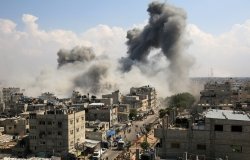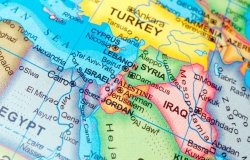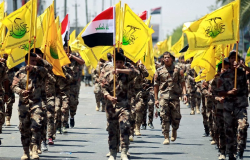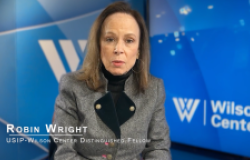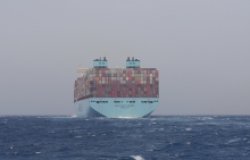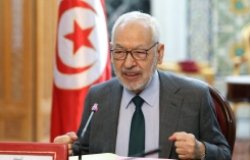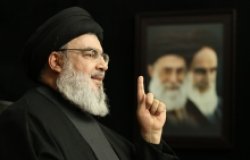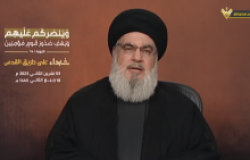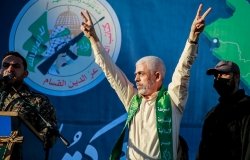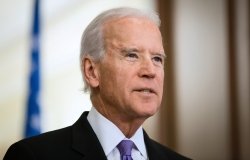U.S. General on ISIS Strategy
On September 16, General Lloyd Austin III outlined the U.S. strategy vis-à-vis the so-called Islamic State, also known as ISIS or ISIL. The following is his statement as prepared for delivery before the Senate Armed Services Committee.
General Lloyd J. Austin III
We have completed the first year of a multi-year campaign designed to counter and militarily defeat the self-proclaimed Islamic State (ISIL), which is commonly referred to by our partners in the region as “Daesh.” This terrorist organization presents a very real threat to stability and security in Iraq and Syria and other parts of the Central Region and beyond; and, it also poses a potential threat to the U.S. homeland and our core national interests in the region. Today, despite some slow movement at the tactical level, we continue to make progress across the battlespace in Iraq and Syria in support of the broader USG strategy to degrade and ultimately defeat ISIL. We have achieved measurable effects against this enemy; and, looking ahead, we are postured to continue to make progress on multiple fronts across the combined joint operations area. Key to the enduring success of the military campaign is sustained pressure on ISIL, both from the air and on the ground; and, using indigenous forces to help create and sustain that pressure, while also curbing the flow of foreign fighters and cutting off the enemy’s ability to resource himself.
Today, although ISIL is still able to conduct attacks and incite terror, the organization’s overall capability has been disrupted. While Iraq’s security forces have experienced some setbacks, they continue to make progress, enabled by Coalition airstrikes and our advise and assist and building partner capacity efforts. They have executed a number of Coalition-enabled operations against the enemy. In northern Iraq, the Kurdish Peshmerga have performed exceptionally well. The Kurdish Arab Coalition in northeast Syria also is achieving substantial effects.
Of course, the military piece is just one component of the broader Counter-ISIL Strategy which consists of nine lines of effort (LOE), to be executed by all elements of the U.S. government and with the support of our Coalition partners. The military is responsible for two of the nine lines of effort. We are responsible for LOE #2—“Denying ISIL Safe Haven,” and that is being accomplished through our support to indigenous ground forces in Iraq and Syria, primarily through our precision airstrikes, employment of available Intelligence, Surveillance, and Reconnaissance (ISR) assets, and our advise and assist efforts at operational headquarters. We also are responsible for LOE #3—“Building Partner Capacity,” which includes our train and equip programs for both Iraq and Syria and ongoing advise and assist efforts for Iraq. We must succeed at both in order to set conditions for the military defeat of ISIL. However, a lasting defeat of this enemy will require a ‘whole of government’ effort across all nine LOEs. Most notably, we will need to see stable and inclusive governments in place in Iraq and Syria; and, we will have to curb the flow of foreign fighters, cut off ISIL’s resourcing and financing, and effectively counter the enemy’s information operations.
We are still in the early stages of this campaign and there is tough work ahead, and success will require strategic patience. But, the 60-plus nation Counter-ISIL Coalition remains strong and the indigenous ground forces, with the support of Coalition air operations and our advise and assist and building partner capacity efforts, continue to make progress across the battlespace in Iraq and Syria.
The Road to Mosul, June 2014:
On June 10th, 2014, the city of Mosul, Iraq fell to the terrorist organization, ISIL or “Daesh.” Within days, most of Iraq’s security forces had withdrawn from northern Iraq, ISIL was making a strong push towards Erbil and Baghdad, and the country was in crisis. The U.S., with the support of partner nations, responded quickly and decisively to address the burgeoning crisis. Key also was understanding the root causes of the instability that enabled ISIL’s rapid push south and west towards the capital city. ISIL was not a monolith, as it has sometimes been described. What we saw unfold in the initial stages of the conflict in Iraq was less a reflection of ISIL’s military might and more the result of the Sunnis simply refusing to stop the organization’s advance through the country. Over a period of years, the Iraqi government under Prime Minister Maliki had alienated the Sunni and Kurdish populations. This led to growing unrest and security seams. ISIL saw the opportunity and launched their attack into Iraq absent resistance from the Sunnis who viewed ISIL as a means for bringing about a change in their government. The majority of the Sunnis simply refused to fight for Prime Minister Maliki. They allowed – and in some cases facilitated – ISIL’s push through the country.
Unfortunately, the security forces were largely incapable of mounting a credible defense against ISIL. After we departed in 2011, their skills quickly atrophied. The leadership of the country made a series of poor decisions; among them was the decision to stop training the Iraqi security forces and to stop maintaining their equipment. They, in turn, suffered a number of defeats early on in ISIL’s push towards Baghdad.
The Regional Campaign Plan to Counter ISIL:
One year ago, in September 2014, President Obama announced to the American people that the United States, with the support of a broad Coalition, would take action to degrade, dismantle, and ultimately defeat ISIL through a comprehensive and sustained whole-of-government strategy. The military effort represents one element of this broader strategy; and, we are currently in the early stages of our counter-ISIL military campaign, Operation Inherent Resolve (OIR). The objective of the military campaign is to defeat the enemy through our own actions and by enabling the efforts of our Coalition partners and the indigenous forces on the ground in Iraq and Syria. The plan consists of a framework with five key elements: COUNTER (HALT), CONTAIN, ENABLE, ELIMINATE, DEFEAT. Many of the efforts are occurring simultaneously or near-simultaneously; and, progress is being achieved in all areas.
Halting ISIL’s advance:
We said that we would first have to halt ISIL’s advance; and, we have done this in Iraq. The enemy is no longer able to conduct large-scale operations and to seize and hold large swaths of new terrain. While ISIL is still capable of exploiting weaknesses in counter-ISIL forces and they can and do operate freely in uncontested terrain, the enemy’s focus has shifted primarily to defending territory in Iraq. Even in areas where we see increased ISIL activity, like at Ramadi and Bayji, we assess that the intent of these operations is simply to hold the terrain and occupy the Iraqi security forces.
A key element of the ongoing effort to degrade ISIL’s capability is our Coalition-led air operations, which have been extraordinarily effective. Since commencing airstrikes on 8 August 2014 and 23 September 2014 in Iraq and Syria, respectively, Coalition air crews from 14 partner nations have conducted more than 6,900 total strikes. They are taking the fight to the enemy in a significant way, and have greatly enhanced the reach and effectiveness of the indigenous ground forces.
Coalition airstrikes in support of OIR have proven to be some of the most precise and disciplined in the history of warfare [>95% effectiveness rating]. The high level of precision seeks to minimize collateral damage, even as we preserve an unprecedented tempo in targeting ISIL’s warfighting capability. This is especially important given the highly-charged sectarian undercurrents at play in the region. We also are taking advantage of our access to the airbase in Incirlik, Turkey, and maximizing the additional assets of our partners in Syria. Turkey is now conducting strikes in Syria, along with a number of other Coalition partners; and, there are a few countries that are contemplating joining them.
ISIL is a terrorist organization that, in the early stages of this fight, was attempting to behave like a conventional military. As the Coalition increased pressure on the enemy, ISIL reverted back to operating like an irregular force in many ways, just as we anticipated. Given the nature of the enemy and the nature of this fight, our air crews are required to maintain near-constant overhead coverage as they pursue dynamic targeting opportunities. Their contribution to the campaign cannot be overstated. The combination of the increasingly effective air campaign and the growing numbers of indigenous ground forces affords us more opportunities to pressure ISIL.
Over the past year, Coalition airstrikes have effectively disrupted ISIL’s command and control, interrupted the resourcing of their operations, and attrited their forces and senior leadership. ISIL’s leadership network has been impacted; and, though the organization has demonstrated the ability to replace leaders killed or wounded in action, the replacements are likely to be less skilled and less experienced. Moreover, reflections of recent strikes indicate a growing level of distrust, fear of spies, and paranoia across ISIL’s leadership.
Though degrading the enemy will remain a key task throughout the full duration of the military campaign, our efforts to date have effectively halted ISIL’s advance in Iraq and forced the enemy to fight mainly defensive operations to prevent further loss of territory and access to critical lines of communication.
Containing ISIL:
In addition to halting ISIL’s advance in Iraq, it is imperative that we continue to help to protect our regional partners’ borders and sovereign spaces. ISIL has eroded stability in the region, placing neighboring countries, including Jordan and Lebanon, at risk. We continue to provide critical support to our partners in an effort to bolster their defenses and enable their activities and operations aimed at countering ISIL.
Ultimately, we also want to gain control over the remaining border crossing sites inside of Syria in order to reduce the flow of foreign fighters. To date, Coalition-enabled efforts by anti-ISIL forces have disrupted some key lines of communication between Turkey and Syria and Syria and Iraq. These critical efforts must continue in earnest.
Enabling the indigenous forces:
We said that we would have to enable the efforts of the indigenous forces; and, we are doing so in a number of ways. The pace of the campaign will be dictated by these indigenous forces. We are teaching, coaching and mentoring them through our Advise and Assist efforts. Our advisors are co-located with the Iraqi leadership at the Baghdad Operations Center and the Anbar Operations Center and they have helped the Iraqis to plan and oversee multiple ground operations. We also are assisting the Iraqis in their efforts to regenerate and restructure their security forces through our Building Partner Capacity (BPC) program. To date, nearly 13,000 Iraqi soldiers have been trained at multiple BPC sites in Iraq, and more than 3,000 are currently undergoing training, which includes training to maintain their equipment. Coalition-trained Iraqi Army forces are currently involved in ongoing operations and holding their ground. That said, the Iraqis’ decision to not accept any risk around Baghdad by repositioning forces to fight ISIL will continue to limit their ability to generate sufficient combat power. The Iraqis must recruit and train new forces. Our BPC and advise and assist efforts are making a difference, but until the Iraqis commit to a more rapid force generation, gains will likely remain limited.
We also are in the process of assisting with the training and equipping of Sunni tribal fighters. More than 3,100 fighters have successfully completed training; and, 750 additional fighters are scheduled to undergo training in the coming weeks. This effort represents a potential ‘gamechanger,’ if coupled with meaningful reconciliation by the Government of Iraq, as the GoI cannot be successful long-term without the support of its Sunni citizens.
We also are in the process of training and equipping vetted moderate Syrian opposition forces through our Syria Train & Equip program. Although the program got off to a slow start, in large part due to the complex nature of the undertaking, we remain confident that it will pay dividends going forward. The forces trained will be additive to and may enable efforts already underway by Syrian Kurds, Syrian Arabs, and other anti-ISIL forces. At the same time, we are seeing a shift in momentum in Syria; and, we are looking for ways to build upon the gains achieved thus far.
Of note, over the past several months, the Syrian Kurds, have performed exceptionally well in northeast Syria. They, along with associated Arab elements, have retaken some 17,000 square kilometers from the enemy. This presents a significant opportunity and potential inflection point in the Counter-ISIL Campaign. There is the potential to isolate the capital and remove ISIL from the remaining stretch of border between Syria and Turkey that it still controls. Counter-ISIL operations in this stretch of territory could deal a strategic and ideological blow to ISIL.
Eliminating ungoverned space:
Through our own actions and by enabling the efforts of our Coalition partners and the indigenous forces on the ground in Iraq and Syria, we have disrupted ISIL’s capability and eliminating the enemy’s access to ungoverned spaces and to key border crossings and supply routes in both countries. These efforts will continue to prove essential to the overall success of the Counter-ISIL Campaign.
Defeating ISIL:
We are seeing progress being made in our pursuit of our stated objectives. Last year, we saw ISIL moving in large convoys unimpeded throughout Iraq with black flags flying. Iraq’s security forces were in tatters and the troops either refused or were incapable of defending against the onslaught by ISIL. Since then, with the help of the U.S.-led Coalition, the Iraqis have taken some steps towards rebuilding their forces. The introduction of new commanders has been particularly helpful. The Iraqis also sent a portion of their forces through training at our BPC sites; although, they are not filling the classes to capacity and they do need to do a better job of recruitment and force generation. In terms of progress achieved, the Iraqis have planned and executed a number Coalition-enabled military operations, and they have retaken terrain previously lost to ISIL. Meanwhile, ISIL’s movement is more restricted, and they are adjusting their patterns of activity to avoid being targeted by Coalition aircraft and anti-ISIL forces. There is still a great deal of work to be done and a long road ahead, but at the one-year mark, we are seeing signs of progress in our military campaign.
The Counter-ISIL Coalition:
Of course, the United States is not doing this alone. The contributions being made by our Coalition partners are essential to our success. Indeed, the 60-plus nation Counter-ISIL Coalition represents the strength and cohesion of our campaign. In particular, the active and public involvement of our regional partners, along with a large number of international partner nations, has greatly enhanced the fight and sends a clear message to ISIL and other violent extremist organizations that their actions will not be tolerated.
Existing political challenges:
We have made measurable progress over the past year. Indeed, we have set conditions for further progress across all nine lines of effort. We must build upon the successes achieved to date and take definitive action in key areas. These areas include the disruption of the flow of foreign fighters, improved counter-messaging, and government reforms and reconciliation. Most notably, the effects of our military efforts will be short-lived if the Iraqis do not address their political problems. Prime Minister Haider al-Abadi has vowed to be more inclusive of the Sunnis and Kurds and other minority groups. We are encouraged by the early steps he has taken to reach out to the Sunnis and Kurds and we are urging him to follow through on pledges made in the near-term. We also are encouraged by his efforts to enact much-needed reforms in the government. If effectively implemented, these reforms will address endemic problems in Iraq’s political and economic sectors over the long-term. Enacting the reforms will not be an easy undertaking. However, these efforts are very important. National reconciliation remains critical to the success of the counter-ISIL campaign.
Our collective goal:
The ultimate defeat of ISIL: We said that the military campaign would take time, and it will take time. We should expect there will be occasional setbacks along the way, and particularly in these early stages as we coach and mentor a force that is actively working to regenerate capability after years of neglect and poor leadership. We also need to keep in mind that we are supporting and enabling this effort. We are executing this campaign by, with, and through the indigenous forces; and, our partners are in the lead. It must be this way if we are to achieve lasting positive effects. It is taking a bit longer to get things done as a result; but, the indigenous forces are making progress, and they continue to build capability.
Our mission is clear and that is to degrade and militarily defeat ISIL. In the process, we want to help to change the conditions inside of Iraq and Syria, so that what we see happening there now, does not happen again in the future. We have the right strategy and the right approach to achieve this desired endstate; but, it will take time. Despite the challenges that exist, we do see progress being made, along with many opportunities. We are confident that our actions in pursuit of these opportunities will continue to produce positive results in the coming months.
Related Program

The Islamists
Learn more about Hamas and how it relates to similarly aligned organizations throughout the region. Read more
